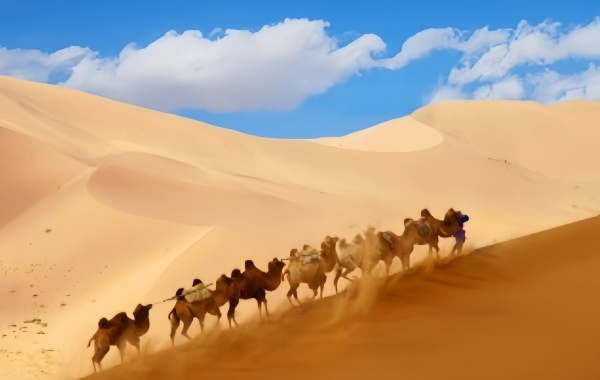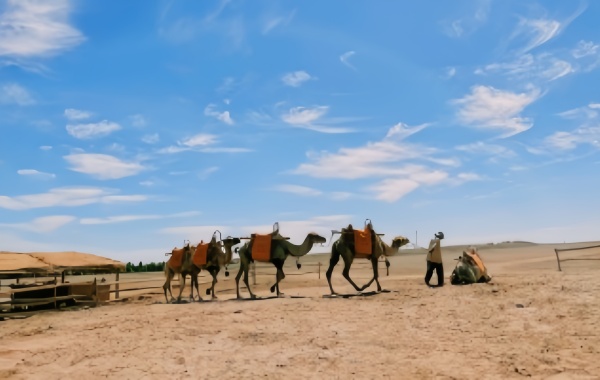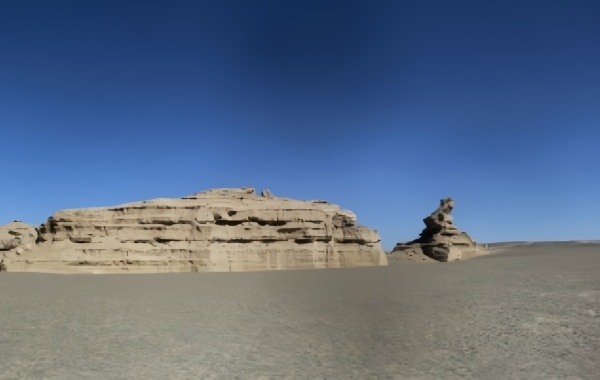Nestled at the western edge of the Gobi Desert, Dunhuang emerges like a mirage—a vibrant tapestry of history, art, and stark natural beauty. The morning sun bathes the golden dunes of the Singing Sand Mountains in a warm glow, their curves shifting with the wind, whispering secrets of the Silk Road. Nearby, the Crescent Lake shimmers like a sapphire, its tranquil waters defying the surrounding sea of sand, a miracle of persistence in the harsh desert.
At the heart of Dunhuang’s legacy lies the Mogao Caves, a labyrinth of 492 grottoes adorned with intricate murals and statues spanning a millennium. The colors—ochre, azure, and gold—tell stories of Buddhist devotion, celestial dancers, and merchant caravans that once thrived here. The caves exhale the quiet reverence of centuries, their walls echoing with prayers in forgotten tongues.
Beyond the caves, the desert stretches endlessly. The ruins of Yangguan and Yumenguan Passes stand as skeletal sentinels, their crumbling walls once marking the frontier between empires. The wind carries echoes of camel bells and the footsteps of monks, soldiers, and traders who passed through these gates into the unknown.
As dusk falls, the desert sky ignites with stars, unpolluted and infinite. The air cools, and the scent of cumin and roasted lamb drifts from Shazhou Night Market, where Uyghur and Han flavors mingle. Dunhuang is more than a destination—it’s a portal to the past, where earth and art, solitude and splendor, exist in perfect harmony.














